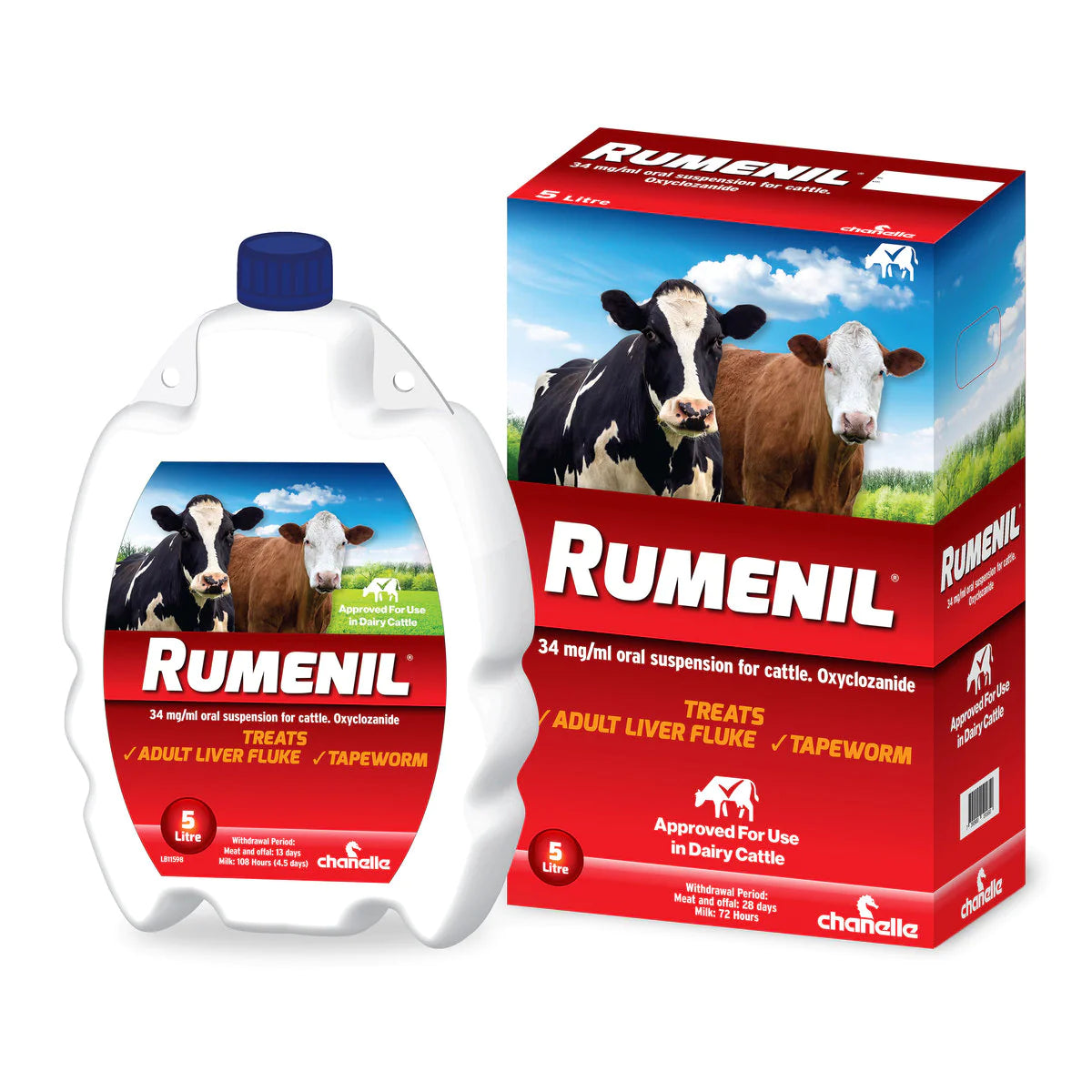Rumenil 5lt
Rumenil 5lt
Rumenil is an orally adminstered drench for the treatment and control of liver and Tapeworms in cattle. Rumenil's active ingredient, Oxyclozanide, has shown to have a high impact on rumen fluke that are present in the bile duct of the animal.
Active Ingredient: Oxyclozanide
Target Species: Cattle
Administration Method: Oral drench
Treats and Controls: Liver fluke, tapeworm
Withdrawal Time: 13 days for cattle intended for meat and offal, 108 hours for cattle producing milk for human consumption. Not permitted for sheep intended for meat and offal, not permitted for use on sheep producing milk for human consumption
Dosage for cattle: 15 ml per 50 kg of bodyweight
| Body Weight | Dose Volume | Number of full doses per pack |
| 5 Litre | ||
| 50kg | 15 ml | 333 |
| 100kg | 30 ml | 167 |
| 150kg | 45 ml | 111 |
| 200kg | 60 ml | 83 |
| 250kg | 90 ml | 56 |
| 350kg and over | 105 ml | 48 |
Always read the label and all enclosed information for Rumenil Oral Suspension before administering to animals!
Key Features of Rumenil:
- Orally administered
- Helps treat and control of liver and Tapeworms in cattle.
- Oxyclozanide, has a high impact on rumen fluke
- Can be used for cattle all year round,
- a very short withdrawal time for dairy cattle.
According to "Liver Fluke - the Facts", a paper published by Animal Health Ireland (AHI), liver fluke costs the worldwide livestock and food industries an estimated €2.5 million per year. These financial losses associated with liver fluke are mainly due to a reduction in the amount of milk and meat produced. Liver fluke can cause a loss of up to 20% in cattle, 30% in sheep and a loss of up to 8% in the milk production of dairy cows.
Identifying infected cattle:
It can sometimes be hard to see the signs of fluke in infected cattle and a slight decline in the performance of the herd can be hard to associate to a single factor. Yet liver fluke affects at least 50% of all Irish herds. The following lists will show some of the common signs that your herd has been infected by liver fluke.
In Young Stock
- Weakened calves
- Reduced weight at the time of weaning caused by both the poor quality and quantity of the milk being produced
- Poor feed conversion
- On occasion anaemia, loss of weight and even death in animals younger than 2 years old.
In Breeding Stock
- Weakened or incapacitated cows, especially in later stages of pregnancy.
- Lower fertility rates which leads to an increase in culls
- Sale weight of cull cows reduced
- Production of milk is greatly reduced
- Reduction in the nutritional value of the milk
- Lower conception rates
- Slower growth in heifers
- Delay in the onset of first oestrus in the herd
- Poor reproductive performance from bulls


